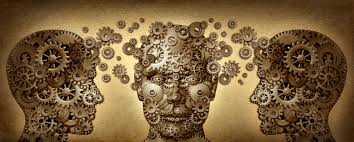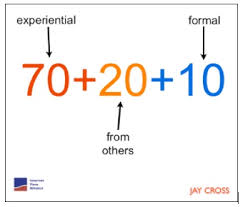The world seems to be divided on this one. The other day, one of my ex colleagues Rasesh and I were chatting up. The topics ranged from families to Office to current affairs. During our conversation he said that he has to go for the ‘compulsory’ training and that he finds it to be a great holiday break from his work.
I wondered why? Why is it that Rasesh and many like him get the thought of holiday first than any other thing when it comes to attending training programs?
Come to think of it the part of the issue lies defining the effective outcomes of the learning intervention.
Global consulting firm Mckinsey & Co recently conducted a survey. The subject of the survey was ‘Do your training efforts drive performance?’ When asked about the biggest challenge about the training programs, most of the executives said it is the lack of effective measurement metric that is a growing concern for them.
So if I think of my conversation with Rasesh, he and many like him are not seeing tangible change like movement from X to Y and hence the feeling of a break.
Here are some thoughts that may help in changing the perception.
If you have seen the movie Moneyball, a movie that shows how a losing team goes onto create history of winning 19 consecutive matches, recall the conversation in the initial part of the movie when Billy Beane (played by Brad Pitt) who is the General Manager of Oakland A’s, challenges the conventional wisdom of the game. He asks the experts in the room to define the actual problem and we see them struggle defining it.
My experience has been that while designing the learning architecture or any specific program, identifying and defining a problem statement is very important. Now this may sound obvious and logical, however I have seen that identifying the real problem is often a challenge.
Learning culture not the training culture: 
Is there a difference? I think there is. Training becomes givers agenda & responsibility whereas in a learning culture the onus of learning lies with the learner. It’s more pull than a push. The challenge for managers today is to ensure that they foster the learning culture in their teams.
Co-ownership:
One of the important deciding factors whether the program will succeed in terms of the desired impact or fail is the co- ownership. When the business team talks about ‘What’ part and the learning team integrates the ‘How’ part is when the participants draw immense value and are able to apply it to their actual business situations.
ownership. When the business team talks about ‘What’ part and the learning team integrates the ‘How’ part is when the participants draw immense value and are able to apply it to their actual business situations.
The 70-20-10 model often gets discussed when it comes to learning and development of an individual. 70% experience – learning & development from day to day tasks, challenges and practice, 20% exposure-learning & development through others and 10% education – learning & development through structured modules, courses and programs. The model emerged after the publication of research by Morgan McCall and his colleagues at CCL (Centre for creative leadership) in the 1990s.
So in today’s context, do we design the learning interventions basis this model?
To conclude:
I have a slightly different view. These percentages may differ from industry to industry and from Organisation to Organisation. In my experience when we offer structured learning with job specific situations embedded in it is what gives better results for the participants and better ROI for the Organisation.
Such kind of designs and interventions will make Rasesh and the likes get more value from learning.



Valuable learning,super
Really liked the point you highlighted about “learning culture Vs training culture”.
Thanx Abhijeet
I have a Q here. If 70% learning is supposed to be through day today tasks, it’s not very controllable. Can it ensure consistency amongst your employees then ? Performance evaluation at then end of the year to determine this – may be too late. Any thoughts ?
Hi Harish, the understanding that such a great proportion of learning happens on the job can facilitate a structured learning around it as well as defining a measurement metric to bring in parity for performance evaluation.